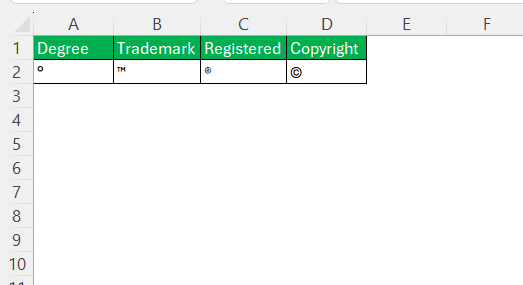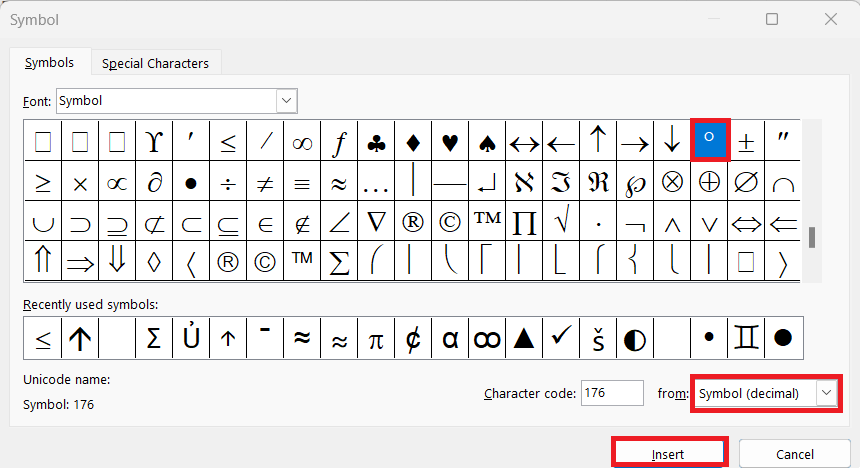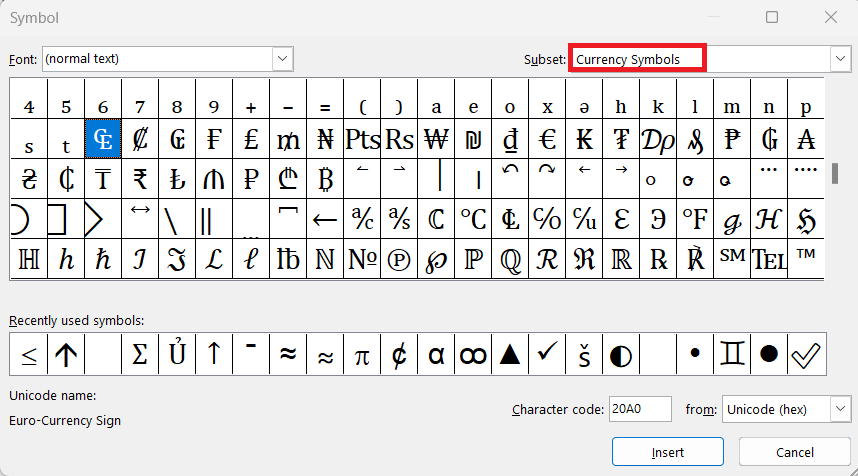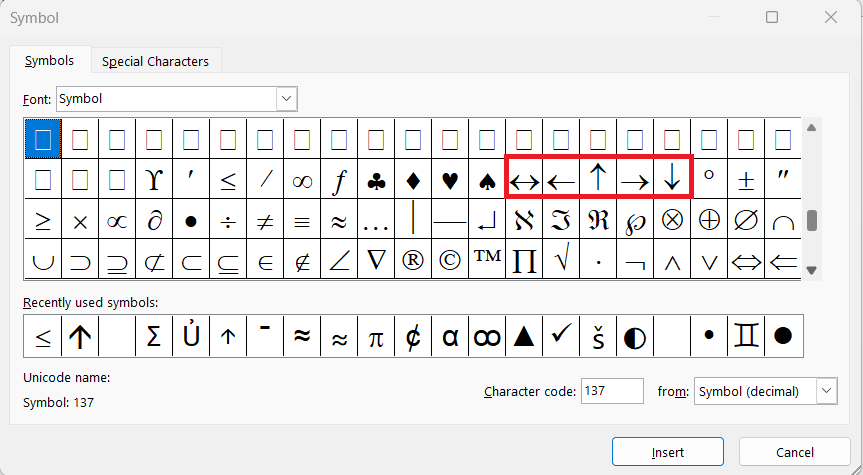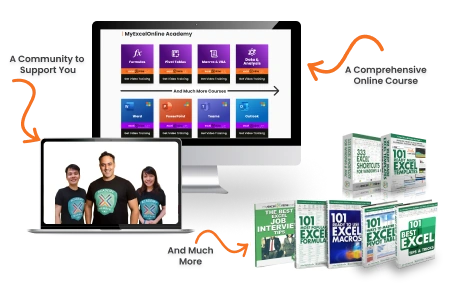Excel is a powerful tool for managing data, and sometimes I need to work with special characters. Whether I’m adding symbols to my spreadsheets, using special characters in formulas, or dealing with Unicode characters, knowing how to find and insert them is essential. In this article, I’ll walk through special characters list in Excel and how to use them efficiently.
Key Takeaways:
- Special characters in Excel enhance data visualization, improve readability, and ensure accurate representation of values.
- The Alt Code method allows quick insertion of symbols by holding the Alt key and typing a numeric code on the keypad.
- The CHAR function converts numeric codes into symbols, making it useful for embedding special characters in formulas.
- The Symbol Dialog Box provides an easy way to insert a variety of characters without memorizing codes.
- Unicode codes expand symbol options, allowing for multilingual and mathematical representations in Excel.
Table of Contents
Understanding Special Characters in Excel
What Are Special Characters in Excel?
Special characters in Excel are symbols or characters that are not part of the standard alphanumeric set (A-Z, a-z, 0-9). These characters can range from symbols like the degree (°) and copyright (©) symbols to mathematical operators, Greek letters, and Unicode symbols. Whether I’m adding symbols to my spreadsheets, using special characters in formulas, or dealing with Unicode characters, knowing how to find and insert them is essential.
Often, special characters are necessary for enhancing data visualization, improving readability, or ensuring accurate representation of values. For instance, I might need to use currency symbols when dealing with financial reports or mathematical symbols in engineering calculations. However, finding and inserting these characters in Excel isn’t always straightforward, which is why it’s helpful to know various methods to include them efficiently.
Special Characters List in Excel
Using the Alt Code Method
The Alt Code method is a quick and efficient way to insert special characters into Excel. By holding down the Alt key and typing a specific numeric code on the numeric keypad, users can introduce a wide variety of symbols into their spreadsheets. This method is straightforward, requiring no special setup within Excel itself, and offers access to a vast range of characters, from currency symbols to geometric shapes.
Some special characters have keyboard shortcuts that make inserting them quick. Here are a few common ones:
- Degree (°): ALT + 0176
- Trademark (™): ALT + 0153
- Registered (®): ALT + 0174
- Copyright (©): ALT + 0169
Users simply need to know the correct Alt codes, which can be found in numerous online resources or by accessing the Character Map in Windows.
Utilizing the CHAR Function
The CHAR function in Excel is an invaluable tool for converting numeric codes into their corresponding special characters based on your computer’s character set. This function is particularly useful for embedding special characters that might not be readily accessible via the keyboard into formulas and functions.
Its syntax, =CHAR(number), allows for straightforward usage where “number” represents any code from 1 to 255. For instance, CHAR(169) produces the copyright symbol ©, while CHAR(10) is often used for inserting line breaks within text strings.
This functionality enhances the customization and functionality of data within Excel.
Accessing the Symbol Dialog Box
Accessing the Symbol Dialog Box in Excel is a user-friendly method for inserting special characters within cells. To use this feature, navigate to the ‘Insert’ tab on the Ribbon and select ‘Symbol’.
This opens a comprehensive dialog box showcasing a library of symbols, with various categories like currency, mathematical operators, and special characters. Users can browse through different fonts using the ‘Font’ selector to find their desired symbol or use the ‘Character code’ field for precise insertion.
The dialog box provides a visual approach, making it easier for users unfamiliar with Alt codes or Unicode to select and insert characters effortlessly.
Exploring Different Categories of Special Characters
Currency Symbols
Currency symbols in Excel are essential for financial data representation, allowing users to denote monetary values accurately. Common currency symbols include the British Pound (£), the Yen (¥), the Euro (€), and the US Dollar ($), each represented by specific ALT codes.
By using these symbols, users ensure clarity and avoid confusion, particularly in multi-currency financial analyses or budgeting spreadsheets. Currency symbols are not only crucial for denoting funds but also serve as a universal language in global financial communications.
Musical and Miscellaneous Symbols
Musical symbols in Excel may include notes, clefs, and rests, used predominantly for educational resources, music catalogs, and sheet music databases. These symbols allow for a concise, visual organizing system in contexts where text-based representations fall short.
Miscellaneous symbols encompass a diverse range of emojis, dingbats, and pictographs that cater to needs from creative design to user interface development. These symbols enhance visual representation and bring a playful or contextual nuance to data, making spreadsheets more engaging and easier to understand.
Geometric and Box Drawing Shapes
Geometric and box drawing shapes in Excel serve as powerful tools for creating visual layouts, diagrams, and structured data presentations. Geometric shapes like circles, squares, and triangles can be used to develop flowcharts, highlight key data points, or illustrate processes.
Box-drawing symbols offer a way to form borders and tables without standard gridlines, which is particularly useful in creating unique report styles or organizing information in custom layouts. By integrating these shapes, users can enhance visual appeal and improve organizational clarity, facilitating better data comprehension.
Arrows and Mathematical Operators
Arrows and mathematical operators in Excel are vital for directing attention and performing complex calculations. Arrows, such as ↑, ↓, ←, and →, guide viewers through data sequences or emphasize trends and data points in charts. They improve navigation by providing clear directional cues or indicating status changes.
Mathematical operators like ±, ∑, or √ are integral to formulas, enabling precise statistical, financial, or scientific computations. By inserting these symbols, users can streamline operations, reduce errors, and ensure clear mathematical communication.
Practical Applications in Excel
Enhancing Data Presentation
Enhancing data presentation in Excel through special characters involves leveraging symbols to make data more visually appealing and easier to interpret. By incorporating elements such as arrows, geometric shapes, and icons, users can transform data lists into more engaging visual narratives.
These symbols help highlight key figures, trends, and relationships within datasets, enabling faster comprehension at a glance. For instance, using color-coded check marks for task completion or arrows to indicate stock market trends can significantly improve data storytelling and decision-making efficiency.
Troubleshooting Display Issues
When encountering display issues with special characters in Excel, it’s crucial to systematically troubleshoot and address the root causes. Common problems arise from font incompatibilities, outdated software versions, or incorrect character encoding settings. First, ensure that you’re using a Unicode-compatible font, as it supports a broader range of characters.
Check if your version of Excel is up to date, as newer versions include enhanced support for various symbol sets. If problems persist, inspect the cell format settings and ensure they are not inadvertently altering the display. In cases where the issue is due to encoding, convert text to a supported format using Excel’s text functions or external tools.
FAQs
What is an alt code?
An alt code is a numerical code that allows users to insert special characters or symbols into text fields by using their keyboard. By holding down the “Alt” key and typing a specific sequence of numbers on the numeric keypad, you can produce characters that are not available directly on the keyboard. Alt codes are widely used in various software applications, including Excel, to enhance text with symbols like ©, ¥, and €.
What are special characters list in Excel?
Special characters in Excel refer to non-standard symbols or marks that aren’t typically found on a keyboard. These include a wide range of symbols such as currency signs, mathematical operators, accented letters, and more. They are used to enhance the presentation of data, allowing users to clearly convey additional meaning or context within their worksheets.
How do I type a check mark in Excel?
To type a check mark in Excel, you can use the Symbol Dialog Box. Navigate to the ‘Insert’ tab, select ‘Symbol,’ choose the ‘Font’ as ‘Wingdings’, and then locate the check mark symbol. Alternatively, use the Alt code method by pressing and holding the “Alt” key while typing “0252” on the numeric keypad.
Are all Unicode characters supported by Excel?
Not all Unicode characters are supported by Excel. While Excel provides extensive support for a variety of Unicode characters, some characters may not display properly due to font limitations or the specific version of Excel in use. It’s important to ensure your font is capable of rendering the desired Unicode characters.
Can special characters affect Excel formulas?
Yes, special characters can affect Excel formulas. If used within formula components, they might disrupt calculations or cause errors. Special characters can be misinterpreted as operators or syntax elements. To avoid issues, ensure they are used only in text strings or cell content and not directly within formula calculations.
What is alt 178 in Excel?
In Excel, Alt 178 produces the character “²” (superscript two), which is commonly used in mathematical expressions to denote squared numbers. This special character can be particularly useful in scientific and engineering calculations where exponents are required.
John Michaloudis is a former accountant and finance analyst at General Electric, a Microsoft MVP since 2020, an Amazon #1 bestselling author of 4 Microsoft Excel books and teacher of Microsoft Excel & Office over at his flagship MyExcelOnline Academy Online Course.

